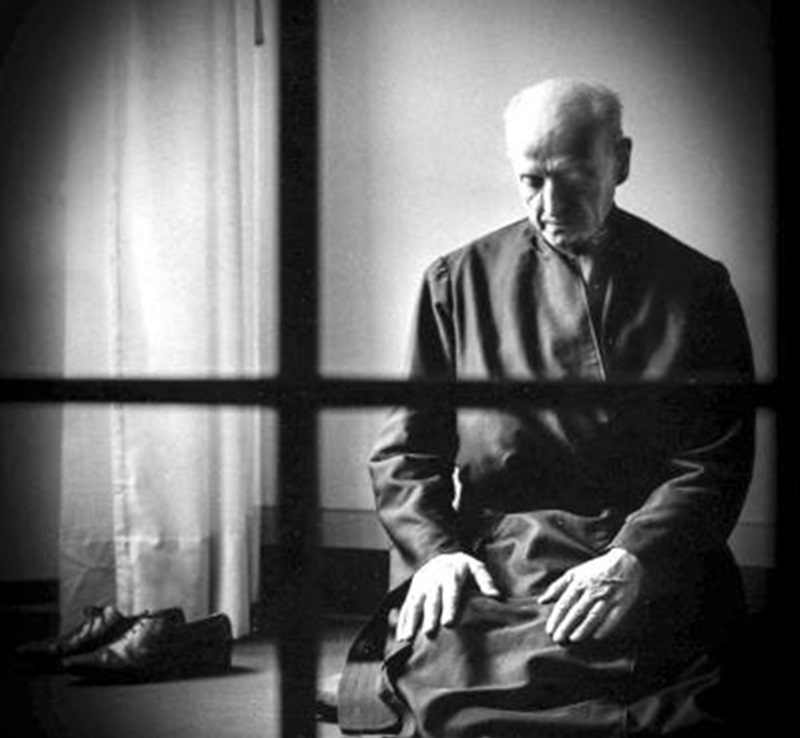Fr Arrupe’s Japan years on the road to holiness
The 27 years the Spanish religious spent on the mission between Tokyo and Hiroshima were remembered during the closing ceremony of the diocesan phase of his beatification process. Head of the Society of Jesus from 1965 to 1983, he loved the Japanese people and culture and provided heroic service among the thousands of injured in the atomic bomb blast of 6 August 1945.
Rome (AsiaNews) – The closing ceremony of the diocesan phase of the beatification process of Fr Pedro Arrupe (1907-1991) took place today. The Spanish Jesuit, who was the 28th superior general of the Society of Jesus from 1965 to 1983, was a missionary much loved by the Japanese people.
In Japan, he served at the country’s most tragic hour through closeness to the victims of the first atomic bombing in Hiroshima in 1945, something Archbishop Baldo Reina, the Pope's vicar for the Diocese of Rome, expressly cited as a key aspect of his life.
He was “a faithful man, obedient to the Church, and a courageous prophet of the conciliar renewal", Archbishop Reina said during the session of the diocesan tribunal that officially delivered to the Dicastery for the Causes of Saints the material collected in the investigation into the holiness of the life and works of this important figure of the Church of the 20th century.
Today's ceremony, held in the presence of the current Superior General Fr Arturo Sosa, took place on Fr Arrupe’s birthday in Bilbao in 1907. After he entered the Jesuit novitiate in 1927, he insistently asked to be assigned as a missionary to Japan, where he carried out his ministry for 27 years.
He arrived in the Asian country in 1938 and initially served in the parish of Yamaguchi in Tokyo, an area evangelised by Saint Francis Xavier himself. With Japan's entry into World War II, he was arrested and questioned as a foreigner.
In 1942 he was assigned to Nagatsuka, the Jesuit novitiate in Hiroshima, where he became vice-rector. It was here, in this city, where, on 2 February 1943, he made his solemn profession. In that same convent, located on the outskirts of Hiroshima, Fr Arrupe found himself as a direct witness to the American atomic bomb on the morning of 6 August 1945.
“I was in my room with another priest at 8:15 when suddenly we saw a blinding light, like a flash of magnesium,” he wrote. “Naturally, we were surprised and jumped up to see what was happening. As I opened the door which faced the city, we heard a formidable explosion similar to the blast of a hurricane. At the same time doors, windows, and walls fell upon us in smithereens. We … were thrown to the floor.”
“I shall never forget my first sight of what was the result of the atomic bomb: a group of young women, eighteen or twenty years old, clinging to one another as they dragged themselves along the road. One had a blister that almost covered her chest; she had burns across half of her face, and a cut in her scalp caused probably by a falling tile, while great quantities of blood coursed freely down her face.”
“On and on they came, a steady procession numbering some 150,000. This gives some idea of the scene of horror that was Hiroshima. … We did the only thing that could be done in the presence of such mass slaughter: we fell on our knees and prayed for guidance, as we were destitute of all human help.”
In view of the situation, the Jesuit set out to organise a field hospital inside the novitiate, which was in the area most directly affected by the blast. Before entering the Society of Jesus, he had studied medicine in Spain; so he worked hard to assist 200 patients with what little means they had available.
In 1958, when the Jesuits established the Province of Japan, Fr Arrupe became its first superior, a position he held until his election as superior general in 1965.
"His entire mission in Japan,” Archbishop Reina noted, “was a long stage in his life, during which he gave the best of himself. His only point of reference was the encounter with the language, customs, courtesy, way of thinking, and feeling of the Japanese.”
06/08/2020 10:04
27/11/2019 14:18







.png)










